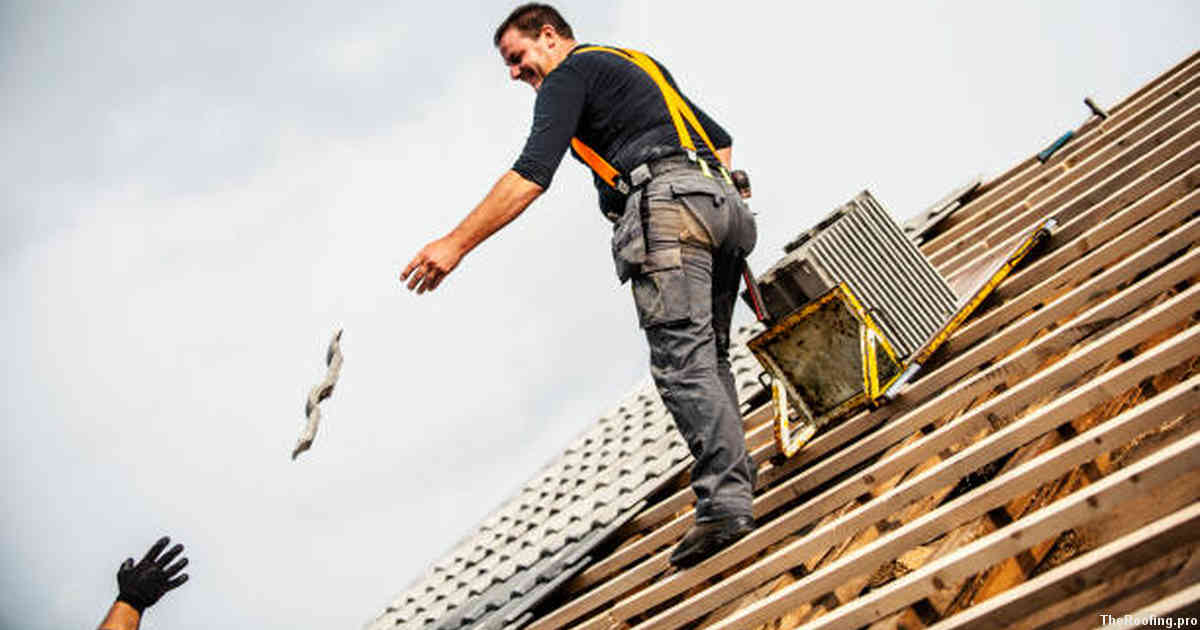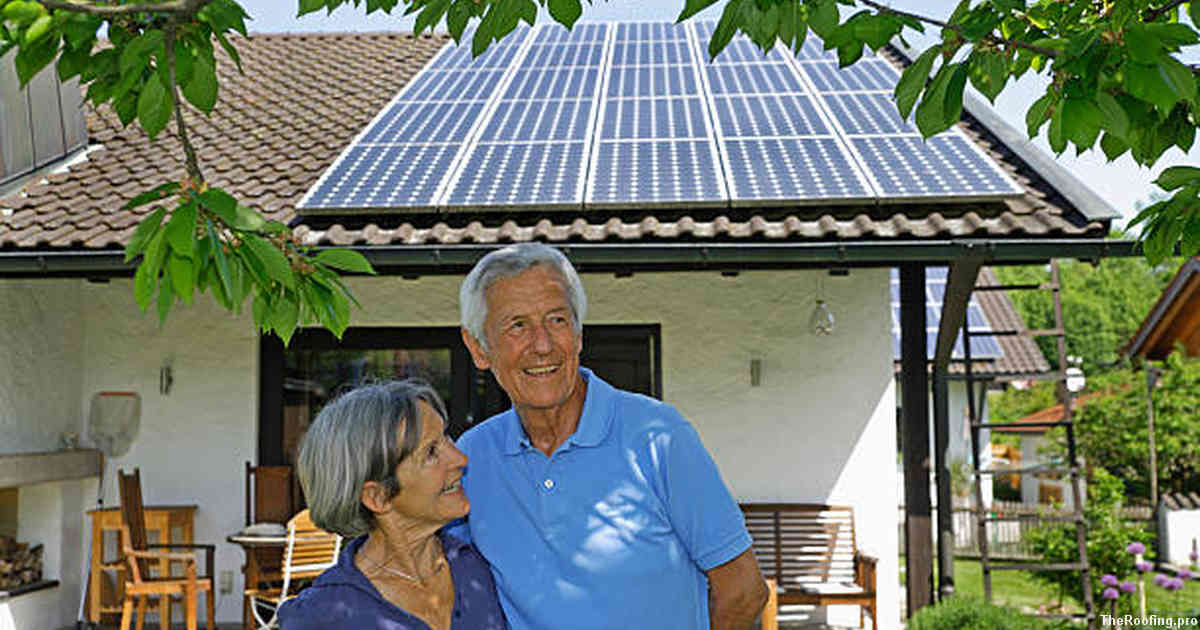
Roof vents are an important part of any home’s ventilation system. They help to keep air circulating and prevent the build-up of moisture, which can cause mould and rot in your attic or roof. One type of vent is a ridge vent, which runs along the peak of the roof. It allows hot air to escape from inside the home while also preventing cold drafts from entering.
Contents:
Ridge vents come in several different styles that offer varying levels of protection and efficiency. The most common style is made up of two pieces: a base section with louvers that allow air to flow through it, and a cap section that sits on top to protect against rain and snow infiltration into the attic space below. Other types include continuous ridge vents, which have no louver openings but provide more efficient airflow than traditional ones; turtleback ridge vents, which feature curved panels for better water drainage; box ridge vents, where individual panels slide together to form a single unit; vented soffit systems, where intake louvers are installed at the eaves level underneath overhanging shingles; and gable end vents placed near each end wall at either side of your house’s peak point.
One thing all these options have in common is their ability to help reduce energy costs by providing improved ventilation for your home throughout all four seasons–warmer air escapes during summer months while cooler air enters during winter months–and reducing condensation buildup within your attic space due its natural design. Many modern varieties also come with insect screens built-in for further protection against unwanted pests like wasps or rodents entering through small cracks or gaps around seams or joints within walls or ceilings.
No matter what type you choose for your own property needs, one thing remains true: Ridge vent installation requires professional expertise as they must be properly sealed onto existing structures such as rafters before being covered by siding materials such as asphalt shingles (or other) so make sure you hire qualified professionals when undertaking this project.
Introduction to Ridge Vents

Ridge vents are a popular choice for homeowners looking to upgrade their roof ventilation system. A ridge vent is installed along the peak of the roof and runs horizontally across it, allowing hot air to escape while also preventing rainwater from entering the attic. Ridge vents provide superior ventilation compared to other types of roof vents due to their ability to move large volumes of air in and out of the attic with minimal energy expenditure.
Ridge vents come in various sizes, styles, and materials that can accommodate most roofs. There are even specific models designed for shingle-style roofs as well as tile or metal roofs. The installation process varies depending on your particular type of roof but typically requires cutting into existing shingles or tiles at the peak before nailing down the vent’s flange with specialized nails or screws. It’s important to note that some local building codes may require professional installation for certain types of ridge vents so be sure to check first before attempting this project yourself.
When selecting a ridge vent, consider factors such as its size (measured in square inches), airflow rating (measured in cubic feet per minute) and its color since these all affect how efficiently it will perform when properly installed on your home’s rooftop. Make sure you get one made from durable material like aluminum or steel so it stands up against harsh weather conditions like wind storms and hail storms over time without needing too much maintenance attention.
Benefits of Installing Ridge Vents

When considering installing a new roof vent, ridge vents are often the first choice. There are several reasons why this is so. These types of vents offer maximum efficiency in terms of air circulation and ventilation throughout the entire attic space. This allows for an even distribution of heat and moisture throughout the home which helps to keep it comfortable all year round.
Another benefit that comes with installing ridge vents is their ability to prevent water damage from occurring due to improper installation or excessive condensation buildup in your attic space. Because they are installed along the top edge of your roof, they help to effectively direct rainwater away from any vulnerable spots on your roof, thus reducing potential damage caused by leaking roofs or other weather-related issues such as ice dams during cold winters.
Ridge vents provide excellent energy savings when compared to other types of venting systems since they require less power consumption than traditional powered fans and do not need additional ductwork installed in order to be effective at circulating air within your attic space. This makes them an ideal choice for those looking for cost-effective ways to reduce their energy bills while still maintaining adequate airflow inside their homes.
Design Considerations for Ridge Vents

When it comes to designing a roof, one of the most important considerations is ventilation. Without proper ventilation, moisture can build up in your attic and cause mold or other damage to the home. Ridge vents are an ideal option for providing adequate ventilation while also maintaining aesthetic appeal.
Ridge vents are designed with two components: an intake vent at the eave and a ridge cap along the peak of the roof line. The intake vent allows fresh air into your attic while simultaneously pulling out warm air that has risen up from below. This process helps maintain consistent temperatures throughout your attic space, which reduces condensation and improves indoor air quality.
In addition to offering superior airflow capabilities, ridge vents provide plenty of design options for homeowners looking to add a unique touch to their roofline. These vents come in several different sizes and shapes that allow you to customize them based on your specific needs and preferences. They’re available in many colors as well so you can match them with existing trim pieces on your home’s exterior if desired. With these customizable features, ridge vents make it easy for you to create an attractive look without compromising function or performance.
Types of Roofs Suitable for Ridge Vents

The type of roof on a home or building is an important factor to consider when installing ridge vents. Roofs with shallow pitches are generally better suited for this ventilation system, as steeper roofs can cause wind-driven rain and snow to blow through the vent openings. Homes with gabled roofs are especially ideal for ridge vents, as they provide plenty of space between the peak of the roof and the rafters.
Hip roofs also work well with ridge vents, though their unique shape makes it difficult to get even coverage across all sides of the roof. Hip roofs require additional material to cover each side in order to achieve a uniform look that blends into the rest of the roofline without disrupting its natural flow. Homes that have multiple levels may need special consideration when installing ridge vents in order to make sure there is proper ventilation throughout every part of each level’s roof structure.
Ridge vent installation should always be done by a professional who understands how different types of roofs interact with this particular style of venting system. With careful planning and attention paid to detail during installation, homeowners can rest assured knowing that their new rooftop ventilation will function optimally year-round no matter what type of roof they have installed on their home or building.
Maintenance Requirements for Ridge Vents

When it comes to roof vents, one of the most popular styles is ridge vents. As a homeowner or business owner, it is important to understand the different requirements that come with maintaining these types of roofs. Proper maintenance will ensure that your roof remains in good condition and lasts for many years without issue.
In terms of specific maintenance requirements for ridge vents, here are some tips to keep in mind:
First and foremost, it’s essential to inspect the vent regularly for any signs of wear or damage. This should be done both from inside the attic as well as outside on top of the roof itself. If you notice any cracks or other damage then they should be repaired immediately by a qualified professional. Make sure all surrounding flashing and sealant remain intact; if necessary reapply them every few years or whenever you spot an issue such as cracking or peeling off areas.
Another important task is clearing away debris like leaves which can build up around the vent over time and block airflow through it – this could cause moisture buildup within your attic which could lead to mold growth in certain cases so regular cleaning is highly recommended. Finally check if there are any animals nesting near/around your vent – remove them safely (with help from wildlife rescue) before they start causing further problems such as blocking air flow completely due to their nests being built too close together etc.
Pros and Cons of Using Ridge Vents

Ridge vents are a popular type of roof vent that provide homeowners with several advantages. These vents allow for the continuous flow of air in and out of an attic, which helps keep it cool during the summer months and warm during the winter. In addition to providing ventilation, ridge vents also help reduce condensation buildup on the underside of roofs by allowing moisture to escape.
However, ridge vents come with some drawbacks as well. The most significant is that they are more expensive than other types of roofing ventilation systems such as gable or soffit vents. If not properly installed, these types of vents can lead to water leakage into your home due to improper flashing or weather-stripping around them. When installing these types of roofing materials you should ensure that there is sufficient space between them and any adjacent structures (such as chimneys) so they can function properly without blocking airflow.
Cost Estimates for Installing a Ridge Vent

The cost of installing a ridge vent can vary significantly depending on the size, complexity and materials used. Generally speaking, if you are looking to install a small, basic model of ridge vent for a residential home then it will likely be in the range of $200-$400. This cost can go up considerably if the installation is larger or more complex – such as for commercial buildings.
Labor costs should also be taken into account when estimating installation costs for your project; hiring professional roofers may increase your total bill but they will also ensure that everything is done correctly and safely. If you choose to install it yourself then there are kits available which contain all the necessary components and instructions, however bear in mind that this could prove difficult without prior experience or help from an experienced person.
Ultimately, no matter how much time and money you invest into installing a ridge vent properly – whether through self-installation or hiring professionals – it’s important to remember that these investments are worthwhile as having one installed correctly will provide numerous benefits such as better air circulation within your home leading to improved comfort levels throughout different seasons.
Summary of Key Points

When it comes to ridge vents, there are many key points that one must understand. A ridge vent is an attic ventilation system which uses the peak of the roof as a form of exhaust. It is typically used in combination with soffit vents and other ventilation systems for better air circulation. This helps reduce humidity levels within your home and promote energy efficiency.
Another important point to note about ridge vents is their installation process. The first step involves cutting off shingles along the peak of your roof, creating an opening into which you will place the vent cover over the top of it. Next, you will need to attach flashing around the edges of this opening using nails or screws before placing insulation behind it if needed; finally, attaching trim pieces on either side to complete its installation.
Another significant detail regarding ridge vents is that they require regular maintenance such as cleaning out debris from underneath them periodically and inspecting them for any signs of wear or tear throughout their lifespan – doing so can help extend their life expectancy by keeping them in optimal condition at all times.